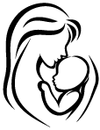Stuart Fischbein (Dr Stu) runs a website and podcast called Birthing Instincts. More specifically, he is an OBGYN (Obstetrician-Gynaecologist) with over 40 years of experience who specialises in breech and twin births and supports VBAC (Vaginal Birth After Caesarean).
In other words, he has delivered a lot of babies in both hospitals and homes, promoting the latter due to it being safer and healthier.
Natural birth at home allows a woman to trust her body fully—hospitals often interrupt what nature does best.
— Ina May Gaskin, midwife
Personal journey
Had my wife not been pregnant at the time, I wouldn’t have considered this talking point.

On a road trip, she found Dr Stu’s podcast and we listened to a few episodes. We kept nodding at what he said and I realised I needed to get him on my podcast.
Which is exactly what I did.
It turns out that, paradoxically, this topic is rarely discussed while being the most important moment in life. Literally. How we’re born shapes our entire life.
'Childbirth is not a medical condition.'
Think about it.
Good birth conditions, for example, mean better health and growth, physically and mentally. Bad conditions can lead to lifelong issues. We have been taught to believe that hospital births are safer than home births. They’re not. We’ve also been taught to believe that it’s all about ‘getting the baby out’ when it’s a lot more.
There’s a quiet strength in birthing at home—it’s about family, not fluorescent lights and strangers.
— Sheila Kitzinger, anthropologist
Home births are safe
There is no evidence that home births are more dangerous than hospital births.
In fact, hospital births can carry more risks (as one Lancet study shows) because the cascade of medical interventions each brings its own set of dangers.
- Induction happens when drugs like oxytocin trigger stronger contractions.
- Heightened pain occurs as intense contractions increase the need for pain relief drugs.
- Epidural use slows labour and limits mobility with pain relief drugs.
- Baby monitoring with continuous tracking further restricts movement.
- Assisted delivery may be needed with forceps or vacuum for prolonged labour.
- Caesarean section is performed when stalled progress or distress leads to surgery.
- Postnatal issues arise as surgery or assistance raises risks of infection or bleeding.
At home, with a midwife, almost none of the above occurs.
Regarding the 'childbirth mortality was higher back then' narrative, this is a myth that won't die.
- Firstly, why would childbirth be so deadly that it requires a team of medical professionals? This isn't observed in other mammals.
- Secondly, when women or babies died in the past, it wasn't because childbirth itself was inherently dangerous but due to environmental and sociopolitical factors.
- Thirdly, women aren't meant to lie on their backs during labour. This practice became common among the upper classes when doctors wanted to see what was going on during birth. It's unnatural, restricts the birth canal and eliminates the aid of gravity. This intervention led to both increased risks and mortality.
Natural birth can thrive outside hospitals—fear fades when you’re surrounded by love, not machines.
— Grantly Dick-Read, doctor
As Dr Stu notes, the establishment has, over the last century or so, duped women into believing that childbirth is a medical condition needing clinical intervention.
Hospitals are for treating patients when something is wrong
Is there something wrong with childbirth?
No.
Childbirth is not a medical condition.
Why rush to the hosiptal, then?
Only in the rare case of a genuine emergency. (The definition of 'emergency' has broadened so much that almost everything is now labelled as one.)
Did you know that, a little over a century ago, the majority of births took place at home. Today, almost all happen in hospitals. What changed?







